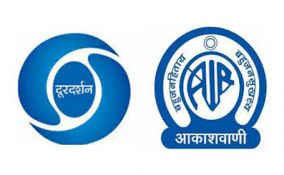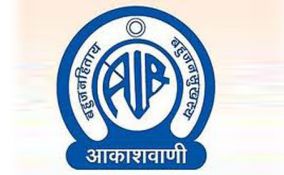Radio plays were once all the rage and a few artistes from All India Radio regretfully feel that they are not so much in demand anymore
There is a buzz in the recording studio at All India Radio. Radio-play artists C.S. Kannan, Manonmani, Parimalam, Siva Ganesh, Marudu Koteswaran, N.S. Subramanium and D. Santhi, are meeting after a long time. They have gathered here to perform a radio play.
It is a happy time for them as they hardly meet these days. They hug each other, catch up on news and reminiscence about the time when they met more often. "Earlier, we used to get calls to do radio plays every week. Now, it is just once in seven or eight months," says Manonmani, an A-grade artist who has worked with actors such as Kovai Sarala.
Many of them are government employees, business men and college teachers now. "We cannot depend solely on this for our livelihood, can we? However, we come here every time we get a call to perform radio play," says Siva Ganesh a retired railways employee who has come all the way from Chennai.
"Let's discuss the script", announces Dr. T Siddarthan, Programme Executive, also known as "prex" in the studio. He hands over the scripts to each artist as they gather around him. "The story is about ecological pollution that affects a village," he explains. The group discusses the characters and the theme of the play. As Manonmani rehearses her lines she says, "Earlier, in the 70s and 80s we would get only 15 minutes to clear our doubts and rehearse before the final take! There were hardly any retakes. If one dialogue goes wrong you have to do the entire scene all over again."
This is because the systems were not digitised then, says Siddarthan. "Today, if someone makes a mistake, we can just delete his line using the sophisticated software. But then, the recording was done on spools, circular frames with magnetic tape wound around them. After the recording we took the spool to the dubbing studio. There, it was manually mixed with other spools with background tracks, music and ambience sounds."
At the recording room, sits Venkat Ram, the transmission executive, also known as "trex", the guy who records the play. "My job begins after the recording." The task of converting these rushes into a full fledged show lies in the hands of the trex. "I give the sound effects, music and background score. It is a long drawn out process. I require at least three days to complete it." Once the artists are ready with their lines, Venkat gives them the cue and the play begins.
Koteswaran plays an angry young man who protests against a dyeing factory that is causing the pollution. The rest of them are the naive villagers. Siva Ganesh plays the wise old village chief while Manonmani, Parimalam and Santhi are the chirpy village girls. "What counts in a radio play is the feel or the emotion. Unlike a stage play, there are no visuals here. You have to recreate the ambience with your voice," says Manonmani.
All of them agree that conveying an emotion is more challenging in a radio play. "However, one advantage of a radio play is that in case a goof-up happens, you can easily cover up by improvising on the spot. No one is looking at you," smiles Parimalam. While impromptu dialogues work well in social plays that use colloquial dialogues, it is not the same with mythological plays. It is important to pay attention to the diction, says C.S. Kannan, who is also a script writer. "The artist should be well versed in the archaic Tamil diction to improvise during the recording of these plays," he says. The mythological plays were usually centred on Mahabharatha and Ramayana. The recent play Vasavadutta, in which Manonmani played the arrogant danseuse ran for seven weeks and was a huge hit, says Venkat who produced it.
Historical plays were also very popular. "They were incorporated in the syllabus of universities and schools," says Koteswaran. "Sujata Rangarajan's Ratham Ore Niram is still considered a classic among radio plays about freedom struggle."
AIR Coimbatore was famous for the radio plays that...................................................










.jpg)




